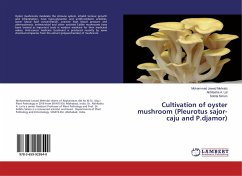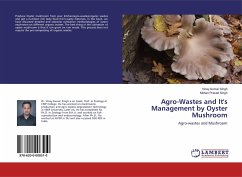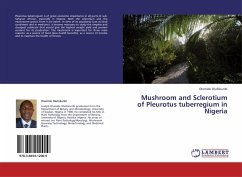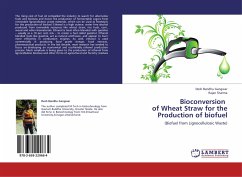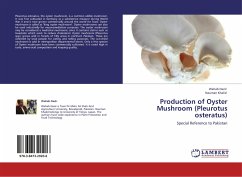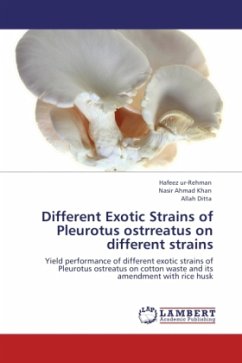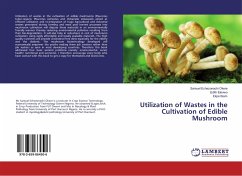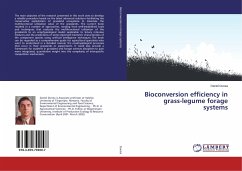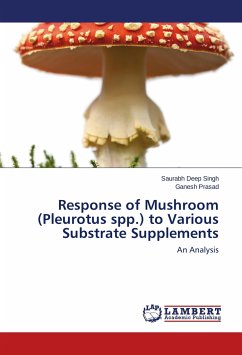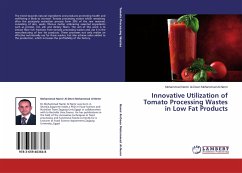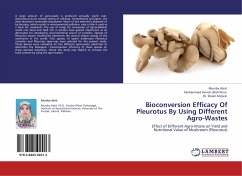
Bioconversion Efficacy Of Pleurotus By Using Different Agro-Wastes
Effect of Different Agro-Waste on Yield and Nutritional Value of Mushroom (Pleurotus)
Versandkostenfrei!
Versandfertig in 6-10 Tagen
32,99 €
inkl. MwSt.

PAYBACK Punkte
16 °P sammeln!
A large amount of agro-waste is produced annually world over. Agricultural straw consists mainly of cellulose, hemicellulose and lignin, the most abundant renewable biopolymer. Much of this material is disposed of by burning, which results in environmental pollution; only a little is used as a feed for ruminants. The use of fungi for conversion of lignocellulosic waste into food and feed rich in protein have gained importance as an alternative for developing unconventional source of proteins. Species of Pleurotus (oyster mushroom) represents the second largest variety of the mushroom in the wo...
A large amount of agro-waste is produced annually world over. Agricultural straw consists mainly of cellulose, hemicellulose and lignin, the most abundant renewable biopolymer. Much of this material is disposed of by burning, which results in environmental pollution; only a little is used as a feed for ruminants. The use of fungi for conversion of lignocellulosic waste into food and feed rich in protein have gained importance as an alternative for developing unconventional source of proteins. Species of Pleurotus (oyster mushroom) represents the second largest variety of the mushroom in the world. Two species of oyster mushroom Pleurotus ostreatus and Pleurotus sajor-caju were selected for the present study. These species were cultivated on five different agro-waste substrates to determine the biological / bioconversion efficiency of these species on these selected substrates. Hence this study may helpful to increase the food content by using the agro-wastes.



